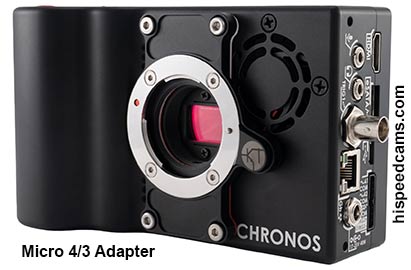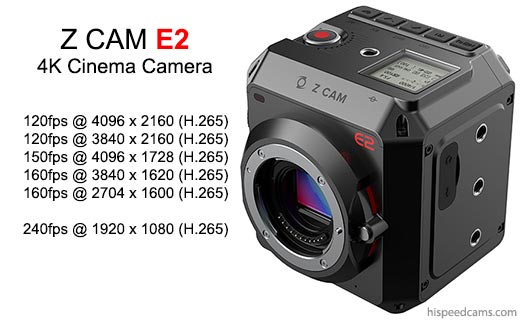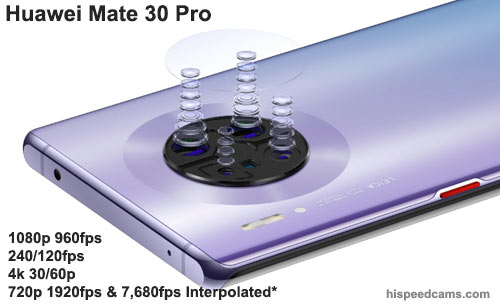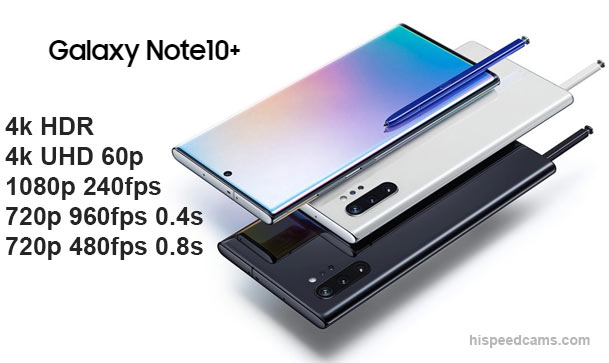Samsung has released the Galaxy Note 10 and 10+ with even a 5G variant which was probably the most leaked phone of the year aside from the iPhone refresh coming next month. The phone has some beefed up specs and an impressive screen with a center cut upper camera punch-hole that love it or hate it is here to stay for now.
The video specs and photo specs look similar to the Galaxy S10 but with better color, dynamic range, lens elements and better overall video compression which looks very nice. The Galaxy S10 was no slouch in video mode but the Note 10 has the better compression and color processing that makes it a notch above. The slow motion spec remains the same as last year’s Note 9 and Galaxy S10 so Samsung is also stagnating in this respect.
Note 10 Video Recording Specs:
Resolution
- 4K UHD video recording at 60 fps (3840×2160)
- 1080p FHD video recording at 60 fps (1920×1080)
- 720p HD video recording at 30 fps (1280×720)
Shooting speed
- Super Slow-mo 720p video support at 960 fps
- Slow motion 1080p video support at 240 fps
- Hyperlapse 1080p video support
Other features
- Super steady
- HDR10+ recording
- Zoom-In Mic
- VDIS (Video Digital Image Stabilization)
- Digital zoom up to 10x
- High CRI LED Flash
- Tracking AF
- Take 9.1MP still photos while recording 4K UHD video
- Playback zoom
- Video location tags
Note 10 Slow Motion Spec by Samsung:
“Super Slow-mo only supports HD resolution. Users can record approximately 0.4 seconds of video captured at 960 fps with approximately 12 seconds of playback. Users can record approximately 0.8 seconds of video captured at 480 fps and digitally enhance the video to 960 fps with approximately 24 seconds of playback. Playback time can be edited in Super Slow-mo player.”
Samsung’s Galaxy Unpacked 2019 Event in 11 Minutes by CNET:
As you can see the Note 10 has the same slow motion spec as last Year’s Note 9 and Galaxy S9/S10 phones which is limited to 960fps at 720p for 0.4 seconds which translates to 12 seconds playback in a 30p timeline. You can double that to 24 seconds by shooting at 480fps for 0.8 seconds “Yippie almost a full second” <—Sarcasm!
Gone are the rumors of 1080p super slow motion and a higher recording time which were heating up by the fact that this new phone has 12GB of fast RAM which could allow for an impressive buffer but Samsung decided to keep it simple and translate the same spec as previous releases.
One area of note is that it appears the video quality is up across the full range of video modes by better noise/artifact handling and improved bit rate handling. The colors and motion look better than any Samsung phone before it. We found 240fps 1080p footage from the Note 10 in the video below that shows a marked improvement in color handling and edge sharpness without causing bad artifacts.
Samsung Galaxy Note 10+ Slow Motion Test 240fps 1080p! by Technical Naveed: → Continue Reading Full Post ←




